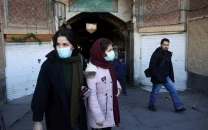The rise of the Aam Aadmi
First word that there was perhaps a new party emerging, came from slums, where dwellers embraced the symbol ‘jharu’.

The writer is a consulting editor with The Statesman and writes for several newspapers in India
For the first time since Delhi was given an assembly, the tide seems to be turning, at least to a point where a third party is being viewed kindly by the mainstream addicts. The Aam Aadmi party has emerged as a serious contender for the forthcoming assembly elections, with its seemingly maverick leaders Arvind Kejriwal, Yogendra Yadav and Prashant Bhushan, having worked out some kind of an electoral mantra that is drawing all sections of society. The buzz is reflected in the early polls, where the fight seems to be narrowing between the BJP and the Aam Aadmi, advantage the latter.
The Aam Aadmi party emerged from the Anna Hazare movement against corruption. A cost was paid for the decision to go political with Hazare moving out and now almost retired from public life. But despite the media derision, Kejriwal and his friends set about infusing new depth to what had been essentially a movement against corruption. A new impetus was given to the party with its “bijli, paani” stir, with the Indian bureaucracy that forms a sizeable section of the electorate in Delhi, aghast to find Kejriwal tearing up electricity and water bills, and encouraging people not to pay for something they did not get. This volatile campaign yielded almost immediate results and the first word that there was perhaps a new party emerging, came from the slums, where the dwellers seemed to embrace the Aam Aadmi party symbol, the ‘jharu’ (broom). Again, the upper middle class that had laughed in its drawing rooms about the ‘jharu’ was forced to eat its derision and accept the fact that the symbol had a resonance quite beyond its comprehension. Besides, it seemed to match the self-effacing style of the new party’s leadership, where the personalities were not allowed to eclipse the issues, at least for the moment.
Initially, the Congress maintained that the Aam Aadmi was cutting into its votes, as did the BJP. But it is clear that the new party is cutting into the vote banks of both the powerful political entities, namely the slum-dwellers’ votes from the Congress, and the youth and middle class from the BJP. It still has to make a sufficient dent in the Muslim vote, but has moved rapidly ahead in securing sections of the Sikh vote.
The voters’ minds can never be known until the votes are counted. Hence, while only pollsters and fools will predict the outcome at this stage, it is a fact that Delhi is witnessing the birth of a new party that will play a political role in the days and months to come. And it will be present to challenge the hegemony of the BJP and the Congress in more ways than one. More so, if Kejriwal and the rest stand committed to their promise of not allying with either, and remaining independent.
As the opposition, the Aam Aadmi will clearly create sufficient trouble for whoever reaches power in Delhi. Given its young cadres and enthusiasm, seats in the Delhi Assembly will be turned into a campaign against mis-governance in its different forms. The Delhi voter, unlike others in India, is guided more by considerations of electricity, water, policing, infrastructure, without caste or community muddying the picture as it were. It is more of a class vote than a caste vote here and hence, the popularity of a party that seems to have convinced many of its ability to provide the essentials.
The interesting part will be if the Aam Aadmi emerges as the single largest party, or captures as many votes as any of the others. Apart from the confusion, this will put out a major message to the rest of India. One, in support of federalism; and two, that there is no wave in favour of the BJP and its prime ministerial candidate despite the hype and the media hysteria. If Delhi can move out of the BJP grip, then clearly, the 2014 general elections will be fought on issues far more serious and important than just personalities, charismatic or otherwise.
Published in The Express Tribune, November 9th, 2013.
Like Opinion & Editorial on Facebook, follow @ETOpEd on Twitter to receive all updates on all our daily pieces.


















COMMENTS
Comments are moderated and generally will be posted if they are on-topic and not abusive.
For more information, please see our Comments FAQ